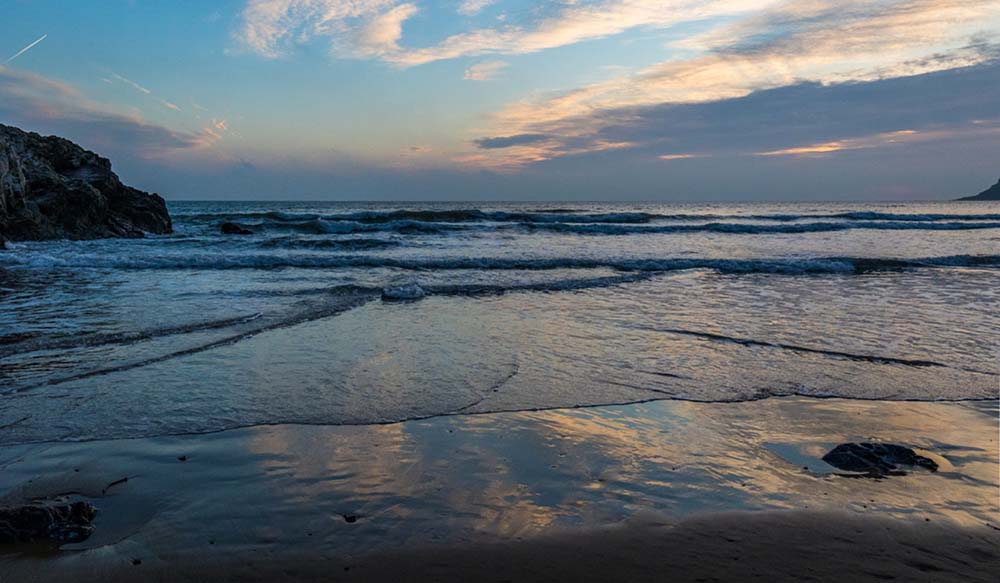
Seascapes are a great area of photography to learn about if you like to capture the raw beauty and power of the ocean.
Whether you are a beginner photographer or a hobbyist, taking stunning photos of the sea requires a blend of camera knowledge, creative vision, spatial awareness in dangerous conditions as well as good timing.
In this full guide, I will take you into the world of seascape photography, giving you valuable tips and techniques to help you capture breathtaking photos of the sea or ocean.
To capture stunning seascape photographs, it’s important to have the right camera kit. Here are the essential equipment items every aspiring seascape photographer should consider:
Invest in a DSLR or mirrorless camera with manual controls to have full creative control over your images. Look for one with good low-light performance and weather sealing for protection against the elements.
Wide-angle lenses are best for capturing expansive seascapes. I’d recommend a focal length between 10mm and 24mm for capturing the width of the ocean while keeping sharpness and minimising distortion.
You’ll need a stable tripod too. Most of the time you’ll be standing on unstable surfaces (wet rocks) so get a tripod with good rubber feet and one that isn’t too light.
Composition plays an important role in seascape photography. Here is a composition technique to consider:
Divide your frame into a 3×3 grid and place key elements along the gridlines or at their intersections. Following the rule of thirds composition means your photo is balanced, and in proportion. Put the sky in the upper third, the sea in the middle and any foreground object, or sand, in the lower third.
Use natural objects such as rocks, cliffs, or even wave patterns to lead the viewer’s eye into the frame. This can create a sense of depth and helps guide your audience the most interesting part of the photo.
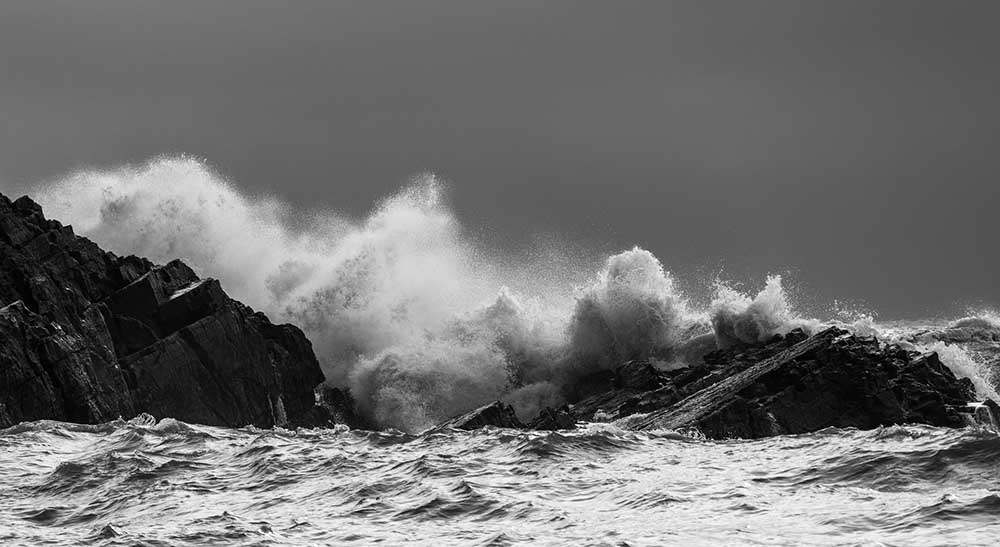
The natural lighting conditions will have a big impact on the mood of your seascape photographs. Here are some tips for working with natural light:
Shoot during the golden hour. This occurs shortly after sunrise and before sunset. The sun at this time can offer soft, warm light that will transform your seascape images. Plan your shoots around this time for stunning results.
Or challenge yourself and shoot on cloudy or stormy days. Do this if you want to add drama and atmosphere to your seascapes. Experiment with shooting during different weather to capture unique and captivating images.
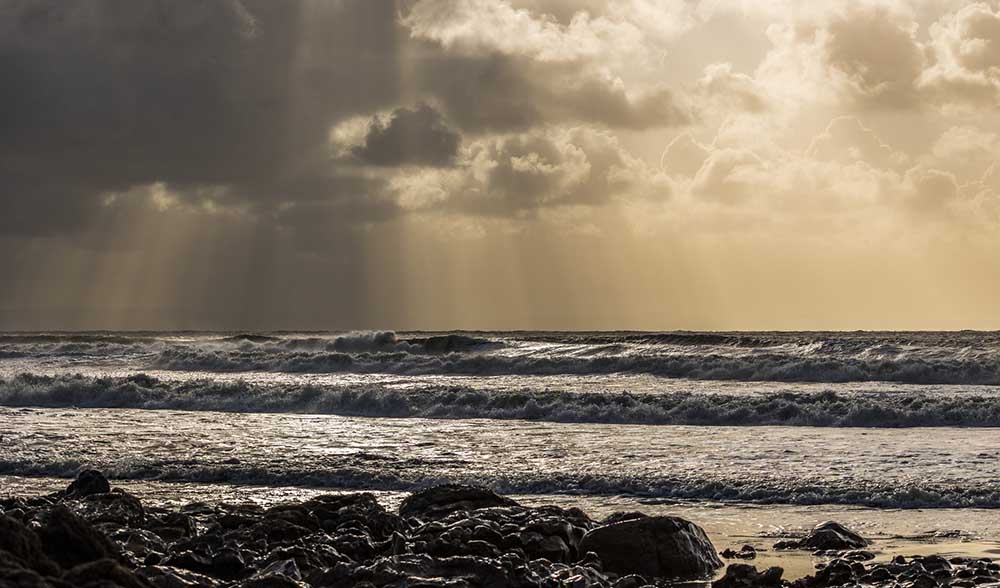
Long exposure photography can create stunning effects in seascape photos. With a slow shutter speed you can make rushing water look silky-smooth and the same with clouds. Here’s how to shoot long exposure seascape photos;
1. Use a sturdy tripod to keep your camera steady during longer exposures, cutting the risk of camera shake.
2. Put an neutral density (ND) filter over your lens to reduce the amount of light entering the camera, allowing you to use a slower shutter speed.
3. Depending on the brightness of the sun, a polariser filter might be needed to cut down on the reflections on the water.
4. Put the camera into shutter priority or manual mode. Set the shutter speed to 1/5th to begin with. Change the aperture and ISO to make sure the photo isn’t too bright if needed.
5. Set a 2 second timer on the camera, or use a shutter release cable, to take the shot. This means the camera doesn’t move as you take the photo.
6. Review the shot, make sure it’s sharp where you intended and adjust the shutter speed if you want a different effect.
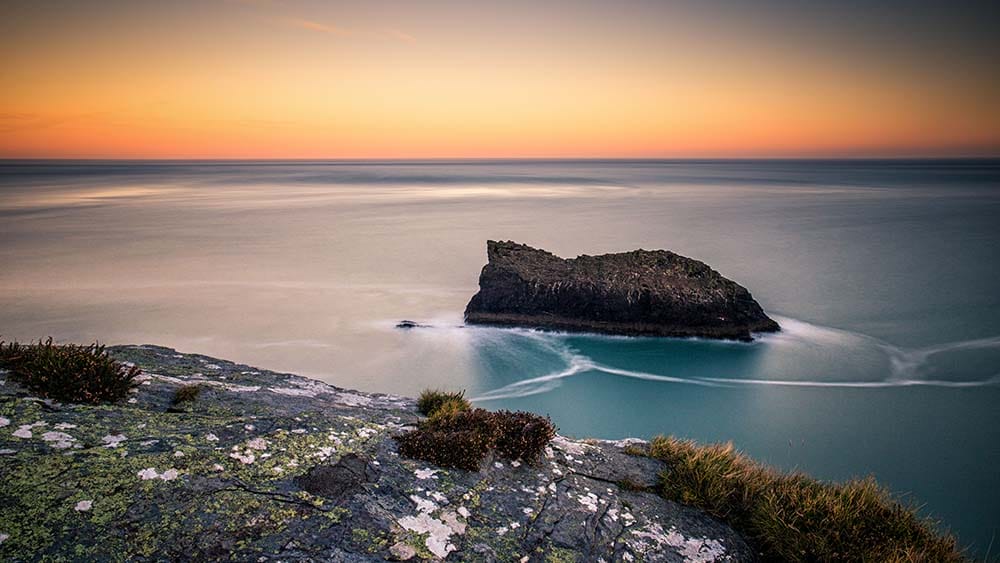
But if you want to capture the raw power and movement of waves in the sea then you’ll need a different shutter speed. Follow these tips to freeze or blur wave action:
Increase your shutter speed to freeze the action. Use a fast shutter speed of around 1/1000th of a second or faster, but review the shot each time to make sure you’re getting the results you want.
If you’re trying to photograph a wave it’s best to use a fast frame burst mode to take lots of photos quickly. This means you’re less likely to miss the crucial moment as every wave behaves differently.
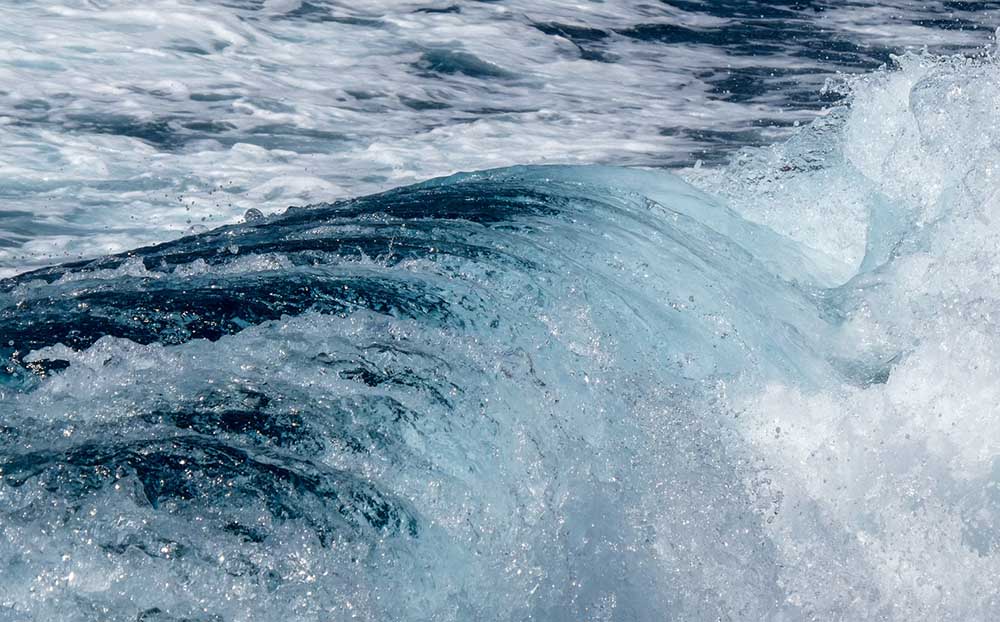
When it comes to editing your seascape photos aim to keep the intent of the photo through the process. Think, do you want it to be dramatic, calm, natural, colourful – let that come through in the edit.
By shooting in RAW format you’ll keep the maximum flexibility and control over your images during the editing process. RAW files have more data and allow for better adjustments without sacrificing image quality.
Adjust the white balance to ensure exact colours in your seascape images. Experiment with colour temperature to achieve the desired mood and tone.
Add in more contrast to the shot as sometimes natural light may not cast shadows in the places you want. Increase the saturation of the colours in the sea if the blues are a bit flat.
I like to increase the dehaze slider in Lightroom to cut down on the ambient haze sometimes. This makes the colours pop!

Seascape photography offers a boundless world of creativity and visual storytelling.
If you really want to take the best seascapes and dramatic photos, look out for locations known for great swells. Big Sur in California or the Amalfi Coast in Italy offer endless photographic opportunities.
Now you have the right understanding about the best equipment, composition and techniques to use you’re ready to go. So, grab your camera, head to the nearest coastline, and let the beauty of the ocean inspire your seascape photography adventures!
Photographers elevate your photo editing with Adobe Photoshop Express, a beginner’s guide for spectacular results.
Find everything you need to know in this guide to polarizer lens filters for photography. How do they work and which is the best to buy?
Discover TOP features in the Lightroom CC mobile app with this guide for enhancing your photo editing skills. For desktop and tablet too.
Learn the basics of photography – fast – with our FREE 60-Second Photographer online course. Each class is short and sharp with simple, actionable steps that give you immediate results.
x 30 lessons

© iPhotography™
Become a confident and competent photographer in less than 30 minutes!
Before you leave, make sure you’ve secured your FREE online photography course (worth £29.99)
Each class is just 60-seconds or less making it the fastest and easiest way to learn photography!